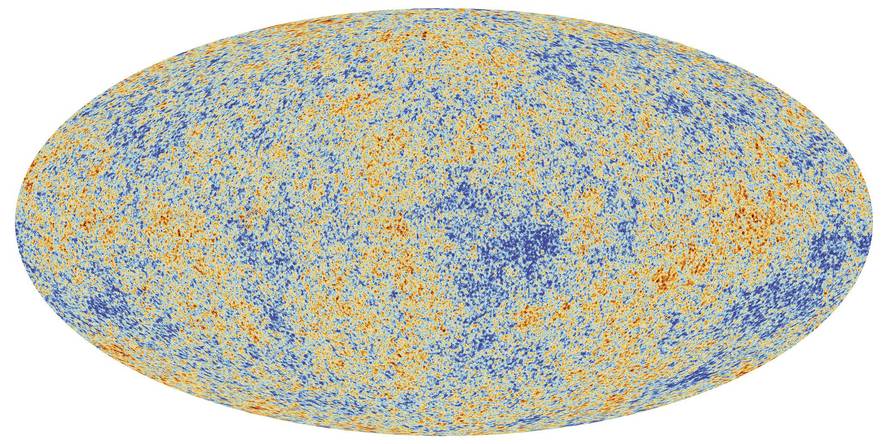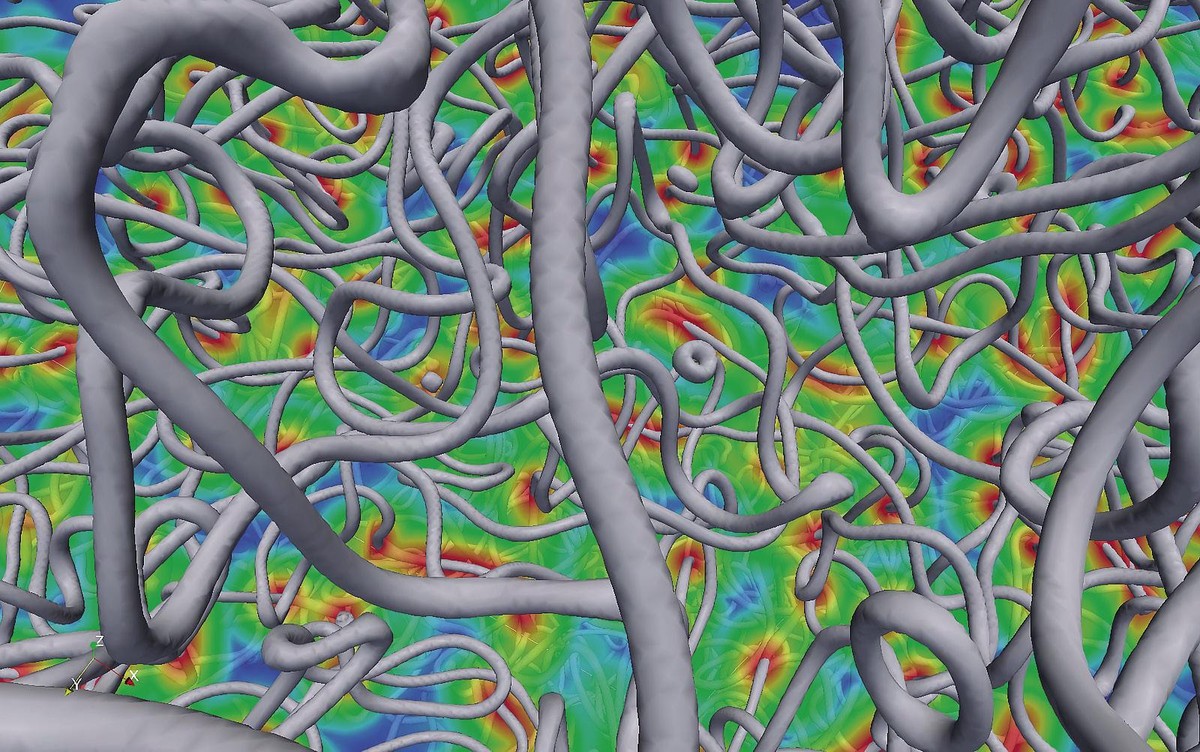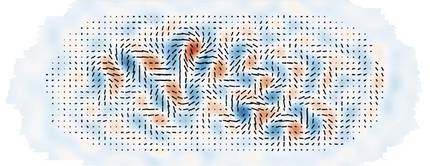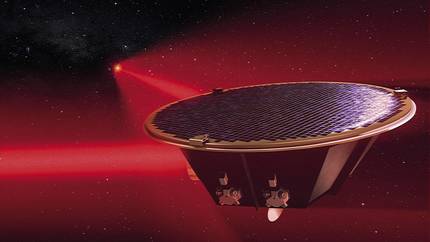Cosmic fossils

Cosmological model of success
Cosmology tries to answer questions such as the origin of the cosmos, its evolution and its future destiny. For this purpose, the most accurate mathematical tools and experimental observations are essential. On the one hand, it is based on the best theory of history to explain gravity: That of Einstein's general relativity. On the other hand, in increasingly accurate astronomical observations and measurements driven by technological advances. The combination of theories and experimental evidence has led to a model capable of providing a very precise description of the universe: the standard model of cosmology [1]. This model, with a broad consensus in the cosmological community, serves, among other things, to have reliable predictions of the main characteristics of galaxies or clusters of galaxies that we can find in the universe.
However, we are still far from forming a model that will solve all the mysteries of the universe, especially since physics that underlies certain fundamental facts and components in the history of the universe has not yet been developed. For example, how did the Big Bang happen? What are dark energy and dark matter? What is the physics necessary to explain its existence? There are several questions and several lines of research open to contemporary cosmology.
A young universe full of mystery
Most of the questions and the principal ones are placed in the young universe. We still have a very qualitative view of the early universe. For example, it is widely assumed that in the early moments of the universe there was an exponential and rapid spatial expansion, called inflation. Most of the observations and measurements confirm inflation, but we have no clues about the physical process that caused it. It is no easy task to answer such questions, especially because they are phenomena that occurred millions of years ago and the particles and interactions of that time are unknown. However, many attempts have been made to understand physics at that time. This is one of the main objectives of the huge accelerator Large Hadron Collider (LHC), located in Geneva. In it, in the collision between the accelerated protons, it has been possible to reproduce the energies that occurred in some moments of the young universe. Among other things, it has been shown that there are new elementary particles such as the particle of Higgs, essential for understanding the current universe.
However, in these experiments on Earth, although we have learned a lot about high energy physics, they are very limited. Clearly, they are still very far from the energetic scales that were in the first moments of the universe. In addition, taking into account the resources and capabilities available, technology is not expected to be developed to design an experiment that repeats these conditions. What other way can we use then? The answer is that, instead of repeating phenomena, we try to find clues of real facts. In our study we have looked for these traces in the astronomical signals that have reached us from the young universe to us. We have analyzed one of the most important: the anisotropy of the cosmic microwave background (CMB). Formerly, the CMB is a liberated radiation when the universe was very young, which has reached us with very few changes to us. It is almost totally isotropic, that is, similar in all directions, but it keeps the nucleus in small deviations from this isotropy: anisotropy. The anisotropy of temperature and polarization of this radiation provide an almost unprecedented picture of the youth of the universe, an unbeatable source of information.

Cosmic fossils, witnesses of the conditions of the young universe
Just as we have a lot of questions about the young universe, the models that try to explain them through the physics of particles are so many: some have as their objective to clarify the details of inflation; others, explain the matter and the formation of antimaty... They are models with different paths and developments, but with characteristics often common. For example, in many of them there are phase transitions similar to that of converting the ice into liquid water by increased temperature. Knowing the phases that have crossed the universe and how the transitions between the different phases have been, would clarify the character of this physics we seek.
It is believed that at the end of most phase transitions, curious objects called “cosmic defects” emerged. The defects are zones of enormous energy concentration and from their origin have travelled through the universe [2]. They are not errors or gaps in theory, but cosmic fossils that maintain the properties of the ancient phase. Since they maintain the characteristics of the high temperature phase in the new phase, they can provide much clarifying information about the old phase: phase change energy, process details, etc.
Although it has never been detected, an ancient line of research is to base the search for defects in the response to the mysteries of the young universe. On the one hand, the possible detection would be a great milestone, since it would clarify the nature of the phase transition. On the other hand, claiming that there has never been a defense gives us much information about the young universe, since we should discard all the models that announce that they exist. Without a doubt, understanding the physics of defects and phenomena that can trigger them can greatly help build the most appropriate model related to the development of the universe.
In our study we analyzed the so-called defects of the cosmic cord. As its name indicates, these defects have a string shape (see figure 2). They move constantly, meet and create ropes again. They form very complicated dynamic rope networks, excessively complex systems of manual analysis. Well, to obtain as reliable results as possible, its evolution is simulated by numerical techniques.

With the Swiss supercomputer CSCS we have analyzed the evolutions of various string networks using boxes that reproduce the characteristics of the different periods of expansion of the universe [3]. Together with the most advanced simulation and paralyzing techniques, we have been able to increase 64 times the size of the already known drills. In each box a network of strings has been analysed that have become small reproductions of the potential universe that houses the strings. The repetition of the process on several occasions has allowed obtaining the most adjusted statistical distributions of the properties of string networks.
The results of the simulations have served to take significant steps in understanding the cosmological evolution of string networks. Among other measures, it has been measured that the strings move at very high average speeds, approximately 60% of the speed of light. We also understand better the interactions between strings, since the collisions, births of new strings and ways to disintegrate them have been accurately studied [4].
In any case, the main objective of the thesis has been to obtain with the greatest possible precision the anisotropies that can generate the strings in the CMB. For this purpose, we have studied in detail the perturbations caused by the movements of the strings, which are those that generate the astronomical footprint that we want to calculate. For example, previous studies in this matter did not know the behavior of networks and perturbations in transitions between the different expansions of the universe. With the new simulations we have overcome this situation since in addition to understanding it we have been able to model. The results have given us reason and have shown the importance of this process for the calculation of perturbations and anisotropy of the CMB. It is calculated that the amplitude of the signal generated by the string networks, both at temperature and polarization, is 30% higher than that expected in the new modeling.
With the help of the greatest simulations of all time, we have taken new steps in the knowledge of cosmic strings, knowing better their dynamics and the effect they can cause on the CMB. We believe that the path has been facilitated to demonstrate experimentally in the future the existence of these curious objects.
They will be decisive years for those who come to obtain evidence of the existence of defenses and to know more thoroughly the young universe. The new generation meters will place the focus on these phenomena. Technical advances will allow detecting component B of the polarization of the CMB even without measuring [5]. It will be the perfect judge of inflation and defective models, since inflation and defects originate a type B polarization with a special and characteristic form.

On the other hand, experiments aimed at detecting gravitational waves (such as LISA [6]) will also be underway. Gravitational waves occur in very violent gravitational processes, as could not be otherwise in the processes of the young universe. Due to its high energy, defects are also strong candidates to be a source of gravitational waves. However, the passage of time has significantly weakened the waves generated long ago, and one of the greatest challenges of current experimental cosmology is the detection of the waves of the young universe. Like Polarization B, the detection of gravitational waves in the early universe will have a prominent place in the viability of our models.
Undoubtedly, we are in an unparalleled time to respond to the mysteries of the young universe, which are undertaking great experimental efforts. Predictions and theoretical works also require advances of the same size, and we will continue in it.
Bibliography Bibliography Bibliography
Work presented at the CAF-Elhuyar Awards.





